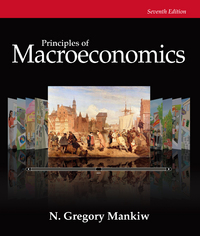Answered step by step
Verified Expert Solution
Question
1 Approved Answer
Suppose the demand for air conditioners is Q = 1000 P and the inverse demand is P = 1000 Q. Suppose this is a perfectly
Suppose the demand for air conditioners is Q = 1000 P and the inverse demand is P = 1000 Q. Suppose this is a perfectly competitive market. The cost function for each firm is C(q) = 200 20q 2q2. This implies the average total cost is u-shaped, and that the marginal cost function of each firm is mc(q) = 20 4q. For simplicity we are thinking of each firm as having only one plant. There are currently 94 firms in the market and the price is 60 per air conditioner. (Obviously air conditioners are not perfectly homogeneous and firms making them are not identical, but these assumptions simplify the problem). (a) What is the rule that determines the output decision of a profit maximizing firm in a competitive market? (b) Using that rule, how much will each firm produce when the price is 60? How much would each produce if the price were 64? (c) Verify that supply equals demand at a price of 60. At a price of 60 is there an incentive for new firms to enter (or existing firms to build more plants)? Why or why not
Step by Step Solution
There are 3 Steps involved in it
Step: 1

Get Instant Access to Expert-Tailored Solutions
See step-by-step solutions with expert insights and AI powered tools for academic success
Step: 2

Step: 3

Ace Your Homework with AI
Get the answers you need in no time with our AI-driven, step-by-step assistance
Get Started


